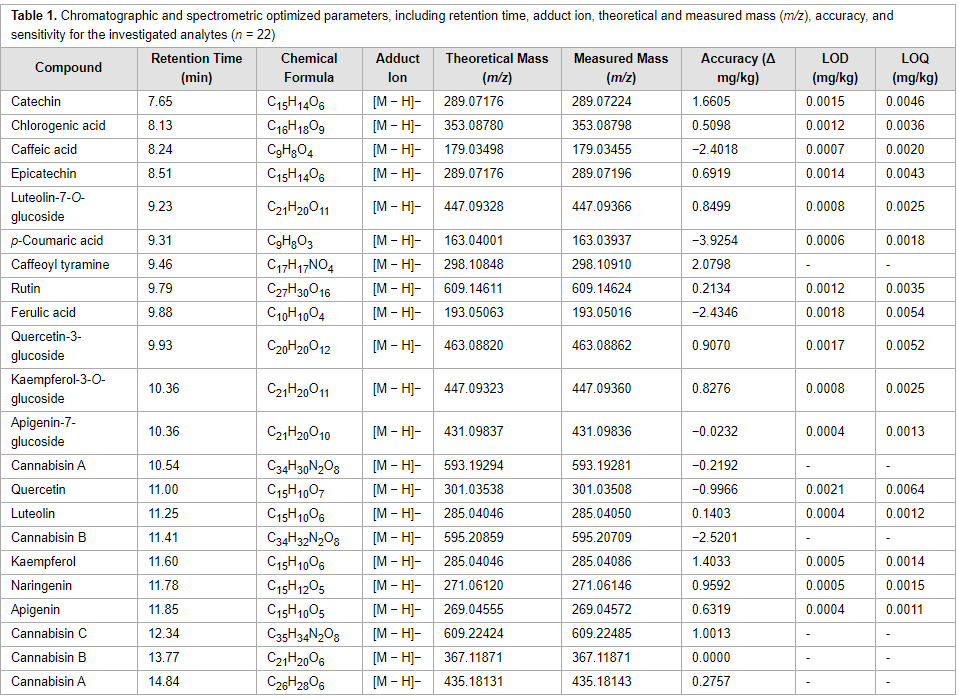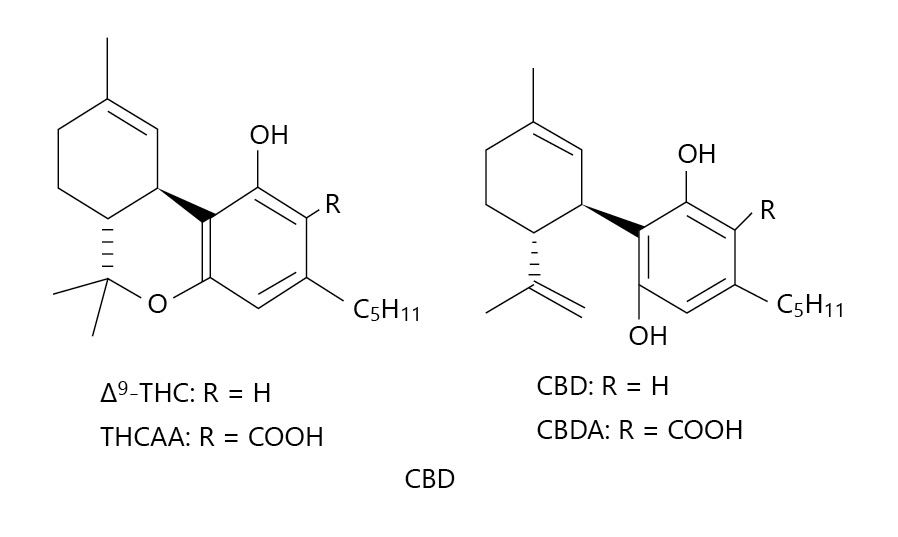Difference between revisions of "Main Page/Featured article of the month/2021"
Shawndouglas (talk | contribs) |
Shawndouglas (talk | contribs) (Added February AotM) |
||
| Line 17: | Line 17: | ||
<!-- Below this line begin pasting previous news --> | <!-- Below this line begin pasting previous news --> | ||
<br /><h2 style="font-size:105%; font-weight:bold; text-align:left; color:#000; padding:0.2em 0.4em; width:50%;">Featured article of the month: February 2021:</h2> | |||
<div style="float: left; margin: 0.5em 0.9em 0.4em 0em;">[[File:IzzonAnalysisPhenolTab1Screen.png|240px]]</div> | |||
'''"[[Journal:Analysis of phenolic compounds in commercial Cannabis sativa L. inflorescences using UHPLC-Q-Orbitrap HRMS|Analysis of phenolic compounds in commercial Cannabis sativa L. inflorescences using UHPLC-Q-Orbitrap HRMS]]"''' | |||
Industrial [[Hemp|hemp]] (''[[Cannabis sativa|Cannabis sativa]]'' L., family [[Cannabaceae|Cannabaceae]]) contains a vast number of relevant bioactive organic compounds, namely [[Polyphenol|polyphenols]], including [[Flavonoid|flavonoids]], phenolic acids, phenol amides, and lignanamides, which are well known for their therapeutic properties. Nowadays, many polyphenol-containing products made from herbal extracts are marketed, claiming to have health-promoting effects. In this context, industrial hemp [[Inflorescence|inflorescences]] may represent an innovative source of bioactive compounds to be used in nutraceutical formulations. The aim of this work was to provide a comprehensive analysis of the polyphenolic fraction contained in polar extracts of four different commercial cultivars—Kompolti, Tiborszallasi, Antal, and Selected Carmagnola (CS)—of hemp inflorescence ... ('''[[Journal:Analysis of phenolic compounds in commercial Cannabis sativa L. inflorescences using UHPLC-Q-Orbitrap HRMS|Full article...]]''')<br /> | |||
|- | |||
|<br /> | |||
<h2 style="font-size:105%; font-weight:bold; text-align:left; color:#000; padding:0.2em 0.4em; width:50%;">Featured article of the month: January 2021:</h2> | <h2 style="font-size:105%; font-weight:bold; text-align:left; color:#000; padding:0.2em 0.4em; width:50%;">Featured article of the month: January 2021:</h2> | ||
<div style="float: left; margin: 0.5em 0.9em 0.4em 0em;">[[File:Fig1 ElSohly MedCannCannab2020 3-1.jpg|240px]]</div> | <div style="float: left; margin: 0.5em 0.9em 0.4em 0em;">[[File:Fig1 ElSohly MedCannCannab2020 3-1.jpg|240px]]</div> | ||
Revision as of 17:55, 28 February 2021
|
|
If you're looking for other "Article of the Month" archives: 2020 - 2021 |
Featured article of the month archive - 2021
Welcome to the CannaQAwiki 2021 archive for the Featured Article of the Month.
Featured article of the month: February 2021:Industrial hemp (Cannabis sativa L., family Cannabaceae) contains a vast number of relevant bioactive organic compounds, namely polyphenols, including flavonoids, phenolic acids, phenol amides, and lignanamides, which are well known for their therapeutic properties. Nowadays, many polyphenol-containing products made from herbal extracts are marketed, claiming to have health-promoting effects. In this context, industrial hemp inflorescences may represent an innovative source of bioactive compounds to be used in nutraceutical formulations. The aim of this work was to provide a comprehensive analysis of the polyphenolic fraction contained in polar extracts of four different commercial cultivars—Kompolti, Tiborszallasi, Antal, and Selected Carmagnola (CS)—of hemp inflorescence ... (Full article...)
|

